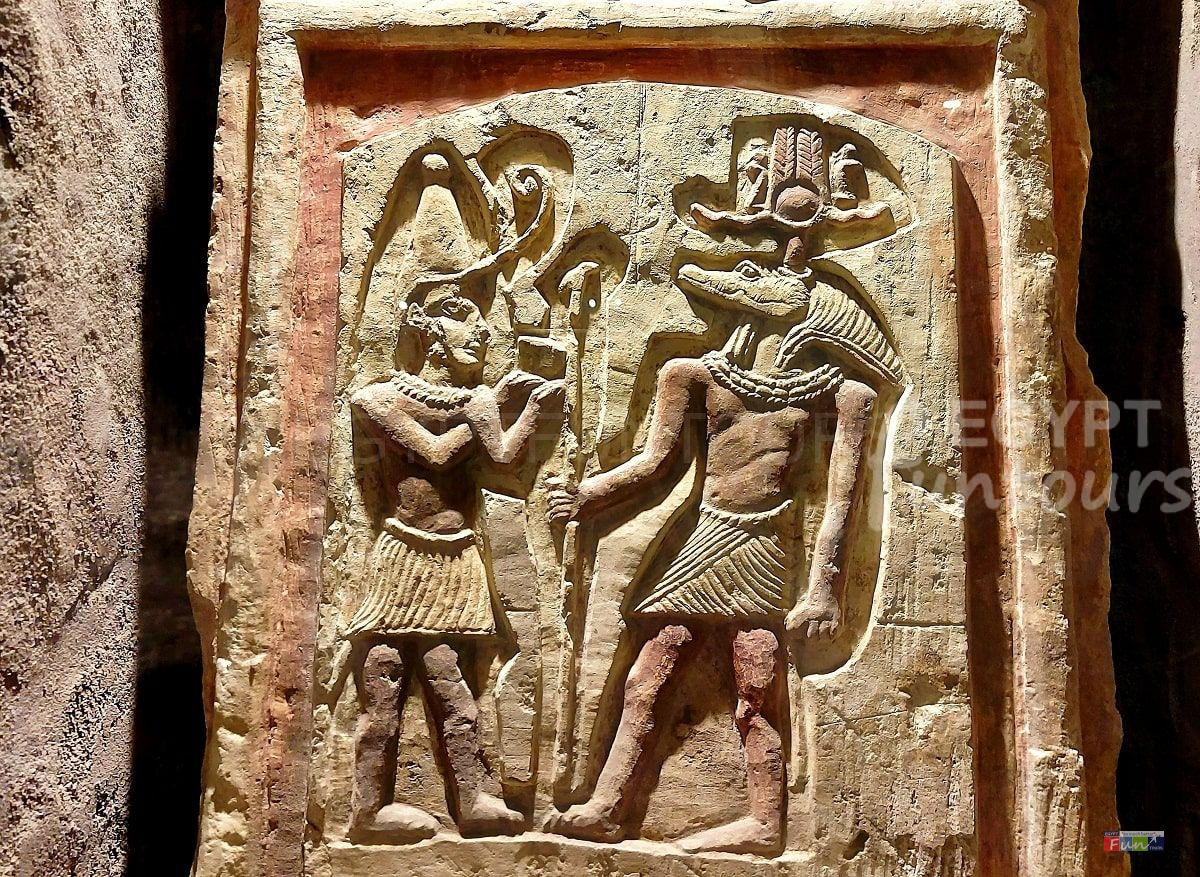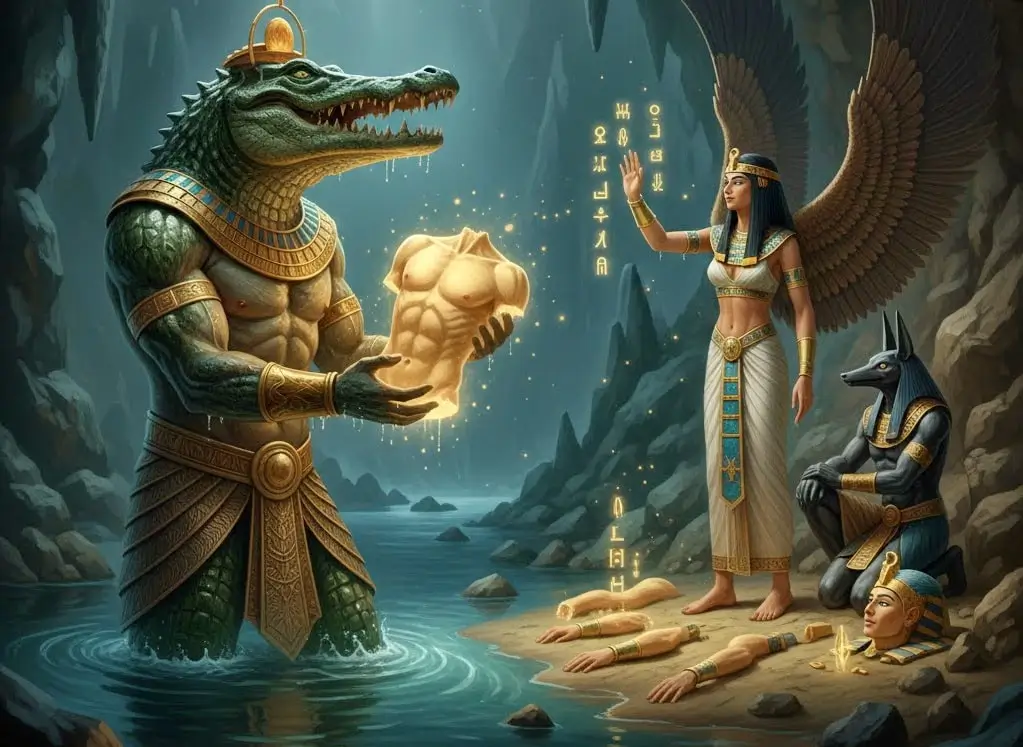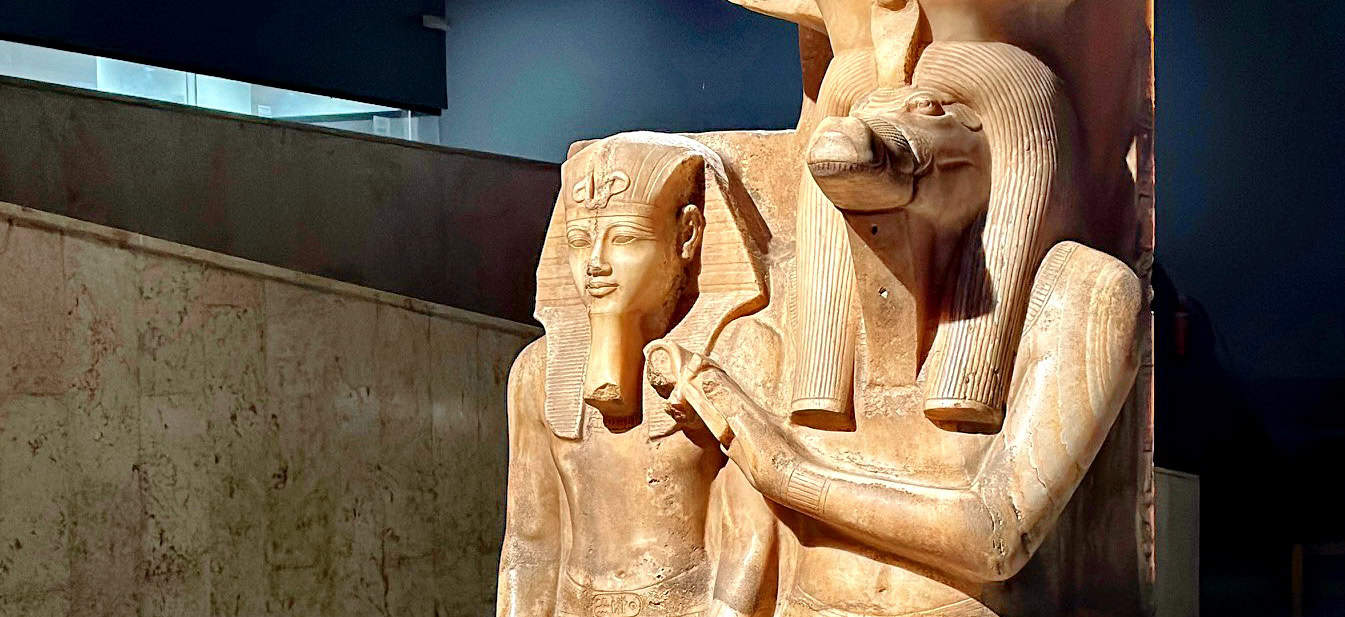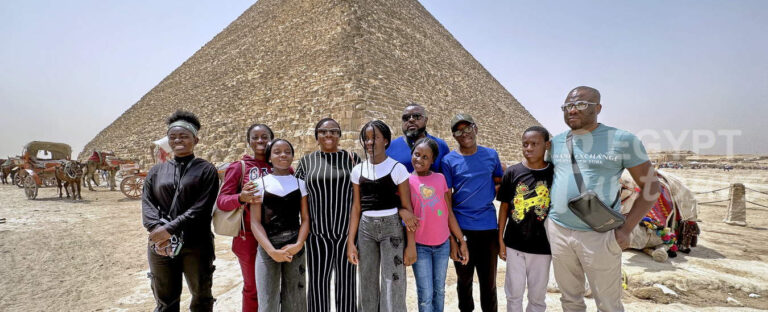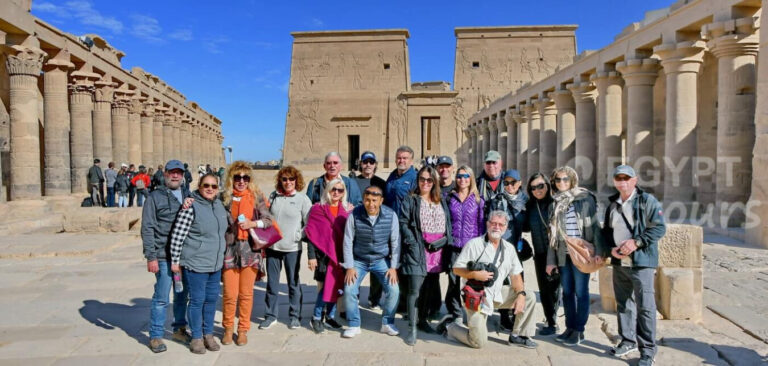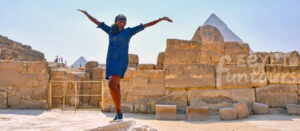Welcome to the Domain of Sobek: The Lord of the Waters
Sobek stands as one of the most ancient and enigmatic deities in the Egyptian pantheon. He is the formidable god of crocodiles, the Nile River, military strength, and fertility. Uniquely, Sobek embodied a striking duality. He was both a menace of chaos and a powerful, benevolent protector. He commanded the raw, untamed power of the Nile, representing the unpredictable threat of the river. Yet, he was simultaneously revered as a healer, a protector of the pharaohs, and a loyal ally to the supreme gods. His unique crocodile form made him a tangible, constant presence in the daily lives of the ancient Egyptians.

